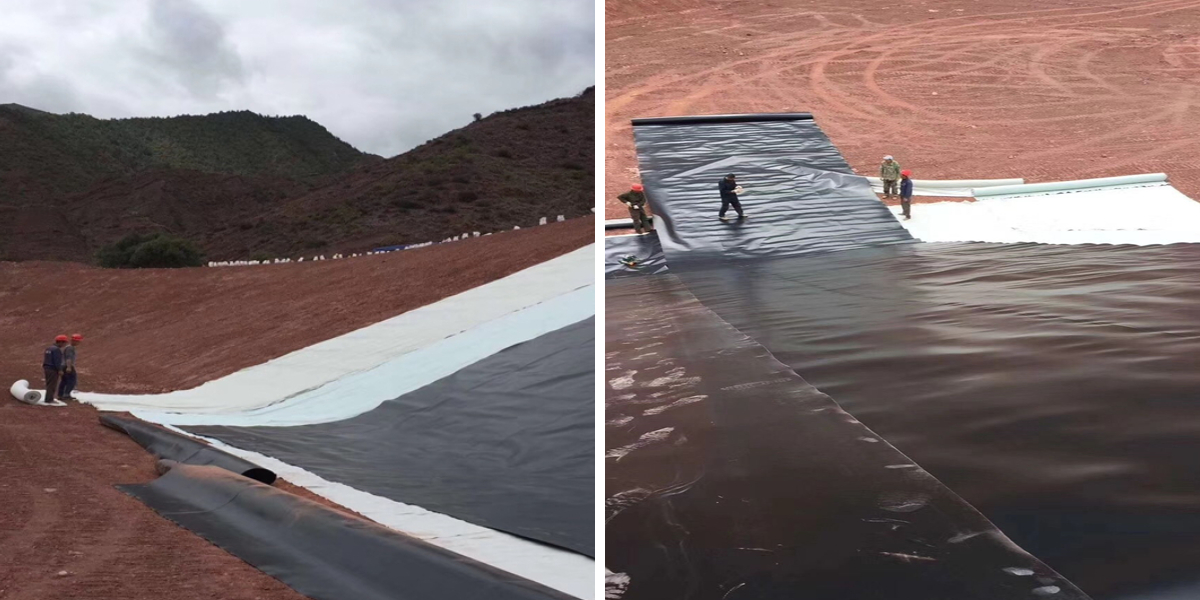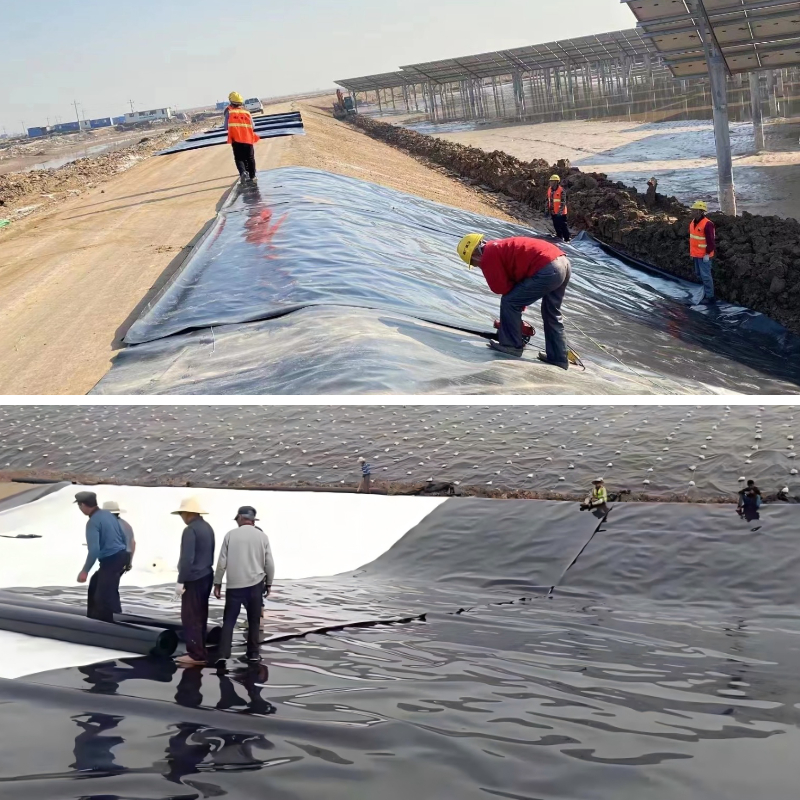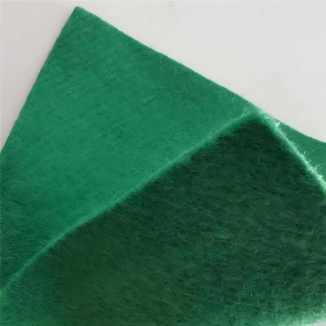How to Test HDPE Geomembrane Weld Quality: Industry-Standard Methods Explained
In building and environmental engineering projects—from landfill liners to reservoir impenetrable systems—HDPE Geomembrane stands as a crucial barrier in opposition to leakage and contamination. The effectiveness of a Geomembrane machine hinges completely on the great of its welds; even a tiny flaw can lead to catastrophic failures, environmental damage, and expensive repairs. To make certain long-term overall performance and compliance with enterprise regulations, trying out HDPE Geomembrane weld exceptional the usage of standardized strategies is non-negotiable. Below, we destroy down 4 industry-proven methods that set the benchmark for weld integrity, with actionable insights for engineers, contractors, and mission managers.
1. Visual Inspection: The First Line of Defense for Geomembrane Weld Quality
Visual inspection is the foundational step in assessing HDPE Geomembrane weld quality, serving as a rapid but critical screening device earlier than superior testing. This technique focuses on figuring out apparent defects that should compromise the weld’s structural integrity, and it have to be carried out with the aid of educated technicians acquainted with Geomembrane set up first-class practices.
Key Inspection Criteria
A notable HDPE Geomembrane weld must have a consistent, clean bead alongside the whole seam with uniform width (typically 15–25 mm relying on task specifications) and even fusion—free of gaps, voids, irregularities, burn marks, charring, or immoderate melting that point out overheating and fabric degradation, whilst the overlapping sections of the Geomembrane should be correct aligned (per ASTM D1974 standards, a minimal lap width of seventy five mm for HDPE Geomembrane sheets) to keep away from susceptible factors from gaps or uneven overlaps, and the weld location ought to be checked for dirt, debris, moisture, or grease that may want to entice for the duration of welding and purpose delamination or voids.
Why Visual Inspection Matters
While visible inspection on my own isn’t adequate to affirm weld strength, it eliminates apparent defects early, saving time and assets in subsequent testing—for example, a weld with seen gaps or infection can be remodeled without delay to keep away from high priced rejections later—and documenting visible findings with snap shots and notes is imperative to preserve compliance with mission records.
2. Air Pressure Test: Non-Destructive Verification of HDPE Geomembrane Seams
The air stress take a look at (also recognised as the “soap bubble test”) is the most broadly used non-destructive approach for checking out HDPE Geomembrane welds. It detects leaks with the aid of measuring air retention in the weld seam, making it best for large-scale initiatives the place damaging trying out is impractical.
How the Air Pressure Test Works
To function the air stress test, first use specialised plugs or clamps to seal each ends of a 1–2 meter part of the HDPE Geomembrane weld to make certain hermetic seals and forestall false readings, then join a strain gauge to one give up of the sealed part and inject air till achieving the industry-specified stage (typically 0.2–0.3 MPa or 2–3 bar for HDPE Geomembrane), permit the strain to stabilize for 5–10 minutes earlier than monitoring for drops over a 15–30 minute length (a stress loss of greater than 5% suggests a leak), and if stress drops, observe a soapy water answer to the weld seam the place bubbles will shape at the leak factor for marking and repair.
Industry Standards for Air Pressure Testing
Compliance with requirements like ASTM D1653 (Standard Test Method for Air Leakage of Seams in Geomembranes) is critical, and for HDPE Geomembrane used in landfill liners or potable water applications, stricter stress retention necessities might also apply—always refer to challenge specs and neighborhood regulations.
Advantages of the Air Pressure Test
The air strain take a look at affords three key advantages: it is non-destructive, maintaining the integrity of the Geomembrane and weld for use; it is cost-effective, requiring minimal gear and enabling speedy on-site performance; and it is reliable, detecting even small leaks that visible inspection may miss.
3. Shear and Peel Tests: Destructive Testing for HDPE Geomembrane Weld Strength
Shear and peel exams are unfavourable strategies that measure the mechanical power of HDPE Geomembrane welds, making sure they meet or exceed the tensile electricity of the mum or dad Geomembrane material. These exams are obligatory for exceptional control, as they validate whether or not the weld can face up to the stresses of installation, backfilling, and long-term use.
Sample Preparation
For shear and peel tests, reduce consultant take a look at specimens from the HDPE Geomembrane weld the usage of a sharp, precision cutter—avoiding edges or areas with visible defects—with shear check specimens being rectangular strips (typically 25 mm wide) with the weld founded and peel take a look at samples organized to measure the pressure required to separate the welded Geomembrane sheets alongside the seam.
Test Procedures
For the shear test, mount the specimen in a tensile checking out computing device with the weld aligned to the machine’s load axis and observe a consistent pressure till the weld fails, recording the shear electricity as the most pressure per unit width (kN/m) required to smash the weld; for the peel test, mount the specimen so pressure is utilized parallel to the weld seam, pulling the two Geomembrane sheets apart, and measure the peel power as the common pressure per unit width over the check length.
Pass/Fail Criteria
Industry requirements (e.g., ASTM D4437 for HDPE Geomembrane) require weld shear electricity to be at least 80% of the guardian material’s tensile strength, whilst peel electricity usually has a minimal fee ranging from 1.5–3.0 kN/m relying on the Geomembrane thickness and assignment requirements, and if a pattern fails, extra checks are carried out to discover root motives like mistaken welding temperature or contamination.
4. Ultrasonic Testing: Advanced Non-Destructive Evaluation of Geomembrane Welds
Ultrasonic trying out is an superior non-destructive approach that makes use of high-frequency sound waves to become aware of inside defects in HDPE Geomembrane welds. It’s especially beneficial for thick Geomembrane sheets (≥1.5 mm) or initiatives the place precision is critical, such as nuclear waste containment or chemical storage facilities.
How Ultrasonic Testing Works
Ultrasonic trying out includes transferring a handheld ultrasonic transducer alongside the HDPE Geomembrane weld, which emits sound waves that penetrate the weld and replicate lower back when encountering boundaries like the weld-metal interface, voids, or delaminations, changing the mirrored waves into electrical indicators displayed on a display the place technicians interpret patterns—uniform alerts point out a sound weld with full fusion, whilst irregular alerts (e.g., spikes, drop-offs) propose defects—and superior structures can map defects in 2D or 3D for specific area and measurement identification to information centered repairs.
Benefits of Ultrasonic Testing
Ultrasonic checking out presents awesome benefits: it detects inner defects like hidden voids or partial fusion that air stress or visible assessments may also miss, it is non-invasive besides adverse the Geomembrane or weld, and it offers excessive precision, making it perfect for complicated weld geometries or quintessential purposes requiring zero defects.
Limitations to Consider
Ultrasonic checking out requires educated technicians and specialised equipment, making it greater luxurious than visible or air stress tests, so it is regularly used as a complementary technique for high-risk initiatives as an alternative than a important screening tool.
Conclusion: Prioritize HDPE Geomembrane Weld Quality for Project Success
The reliability of a Geomembrane machine relies upon completely on weld quality—skipping or reducing corners on trying out can lead to leaks, environmental liability, and challenge delays. By combining visible inspection, air stress testing, shear/peel testing, and ultrasonic checking out (as needed), you make certain compliance with enterprise requirements and long-term overall performance of your HDPE Geomembrane installation.
Whether you’re working on a landfill, water reservoir, or industrial containment project, partnering with a certified trying out company ensures correct outcomes and peace of mind. Remember: investing in ideal weld checking out these days saves time, money, and popularity tomorrow.
Contact Us
Company Name: Shandong Chuangwei New Materials Co., LTD
Contact Person :Jaden Sylvan
Contact Number :+86 19305485668
WhatsApp:+86 19305485668
Enterprise Email: cggeosynthetics@gmail.com
Enterprise Address: Entrepreneurship Park, Dayue District, Tai 'an City,
Shandong Province









